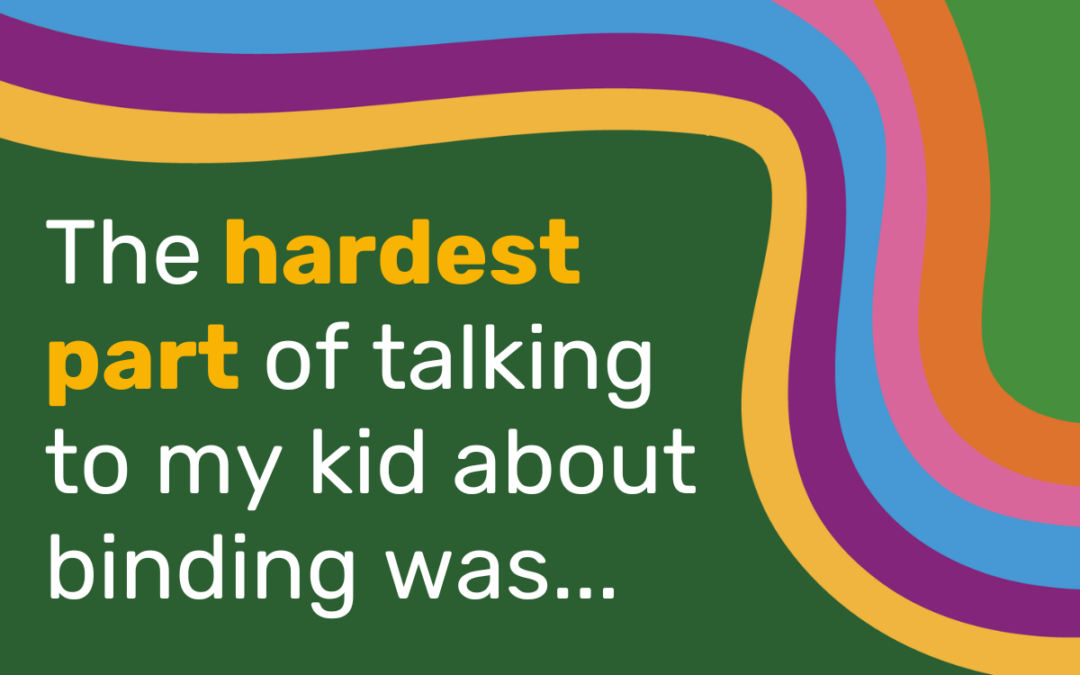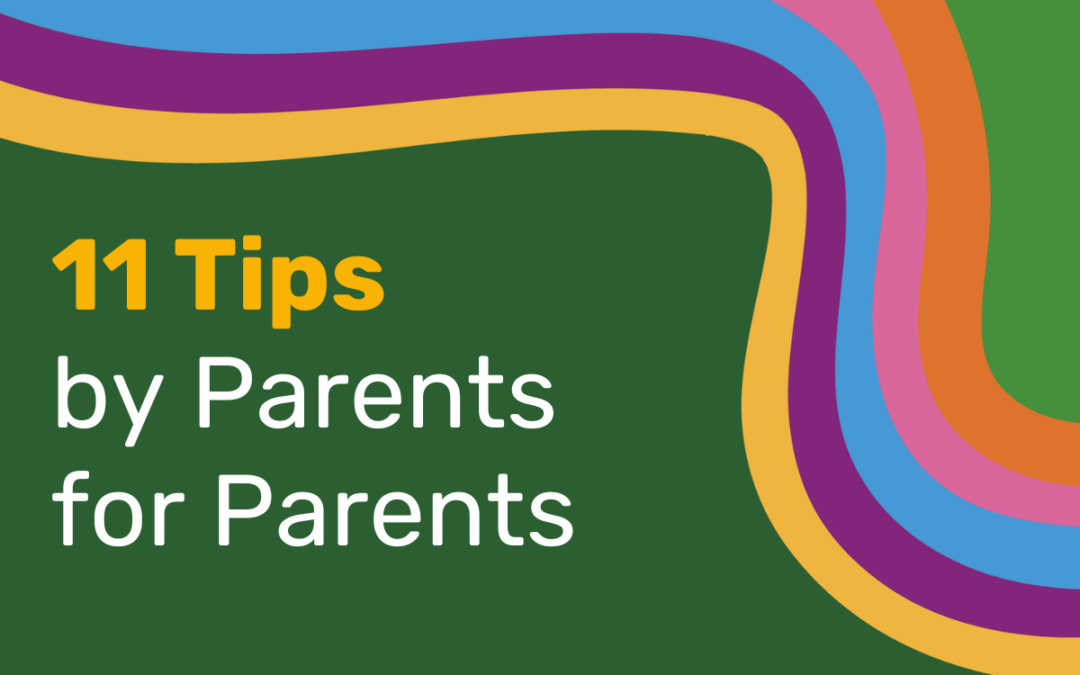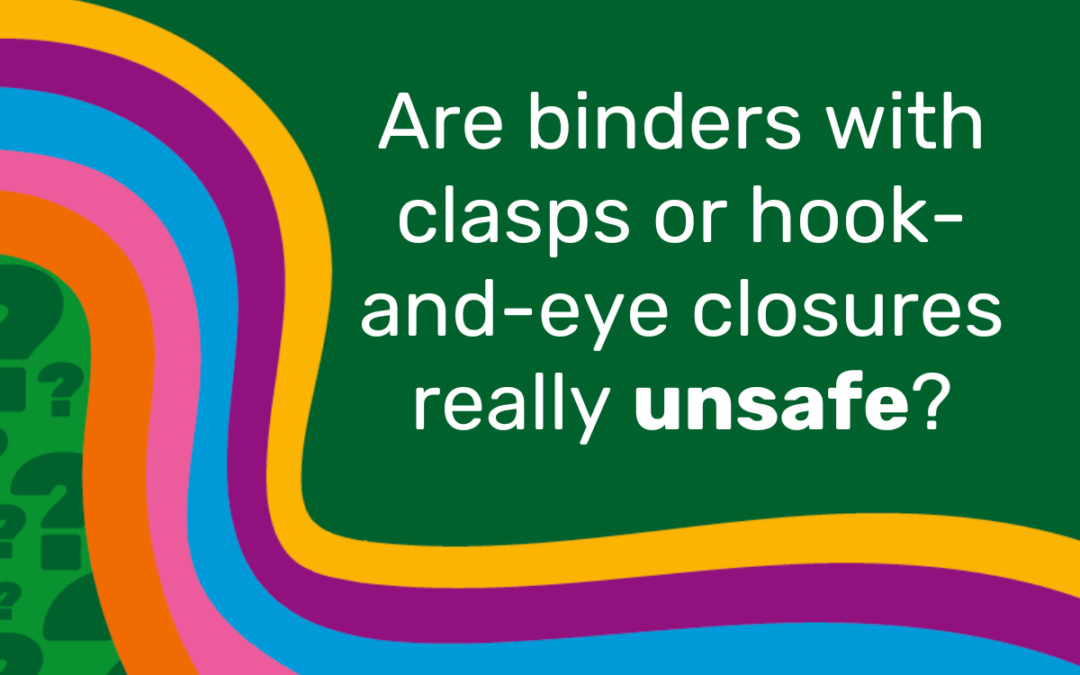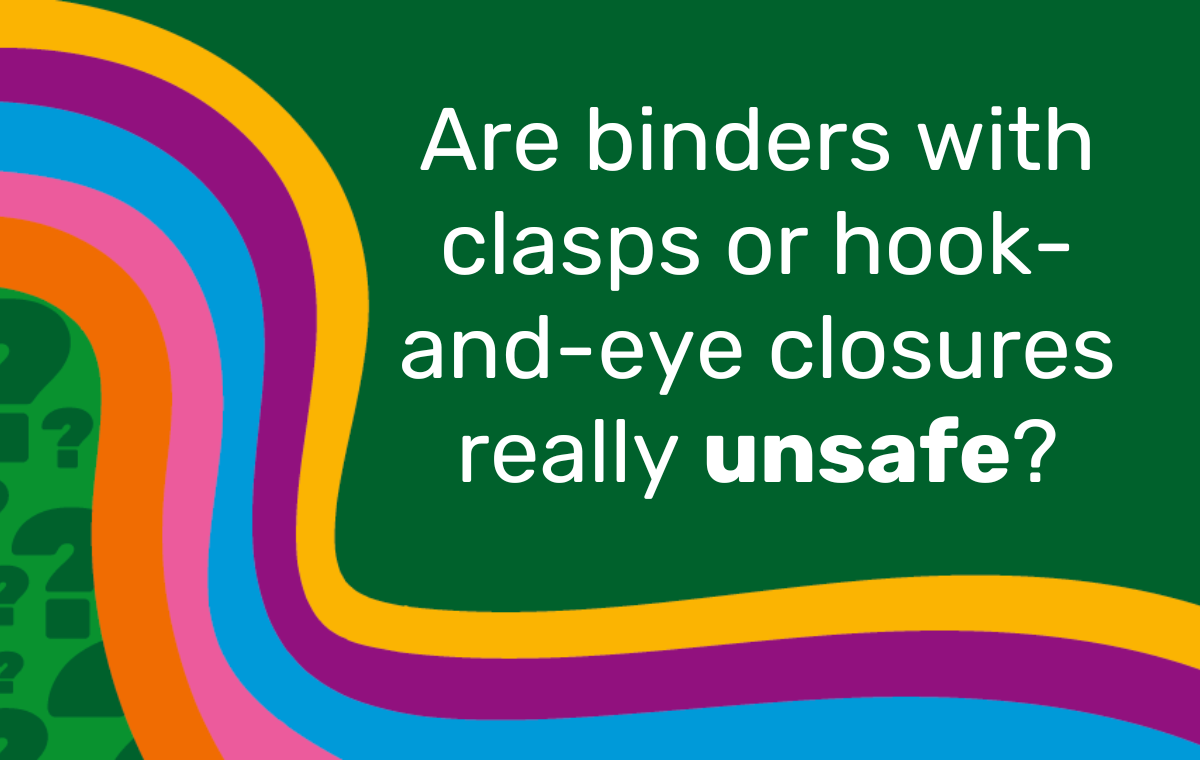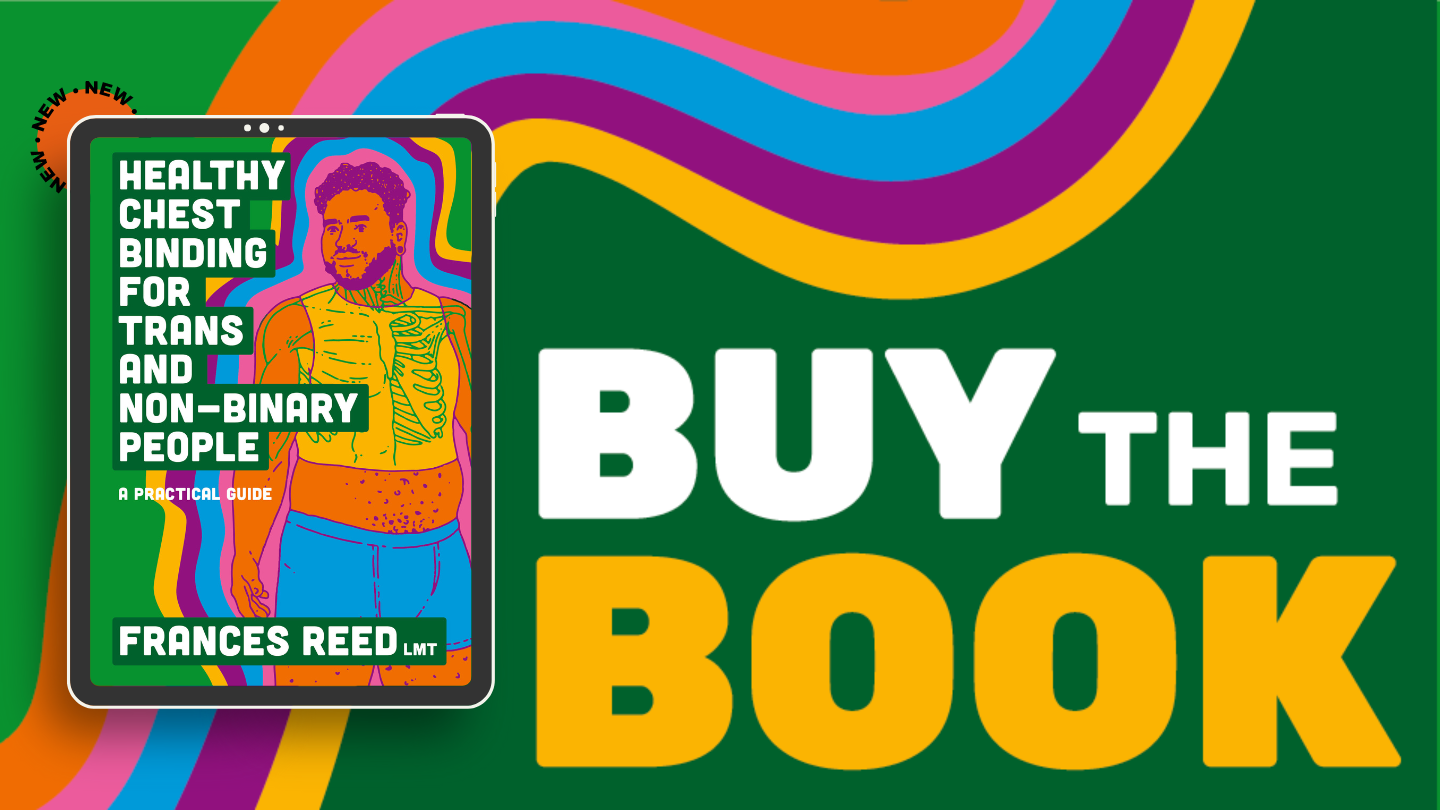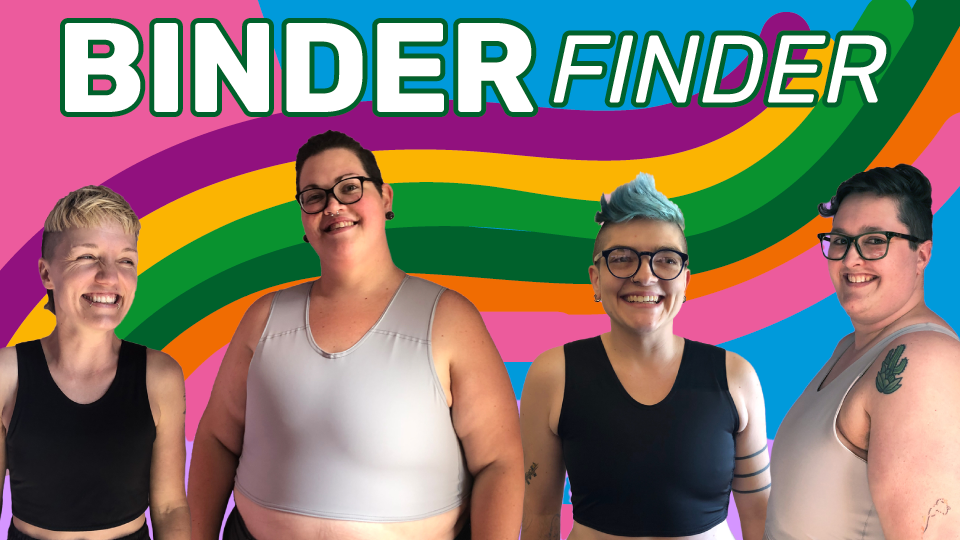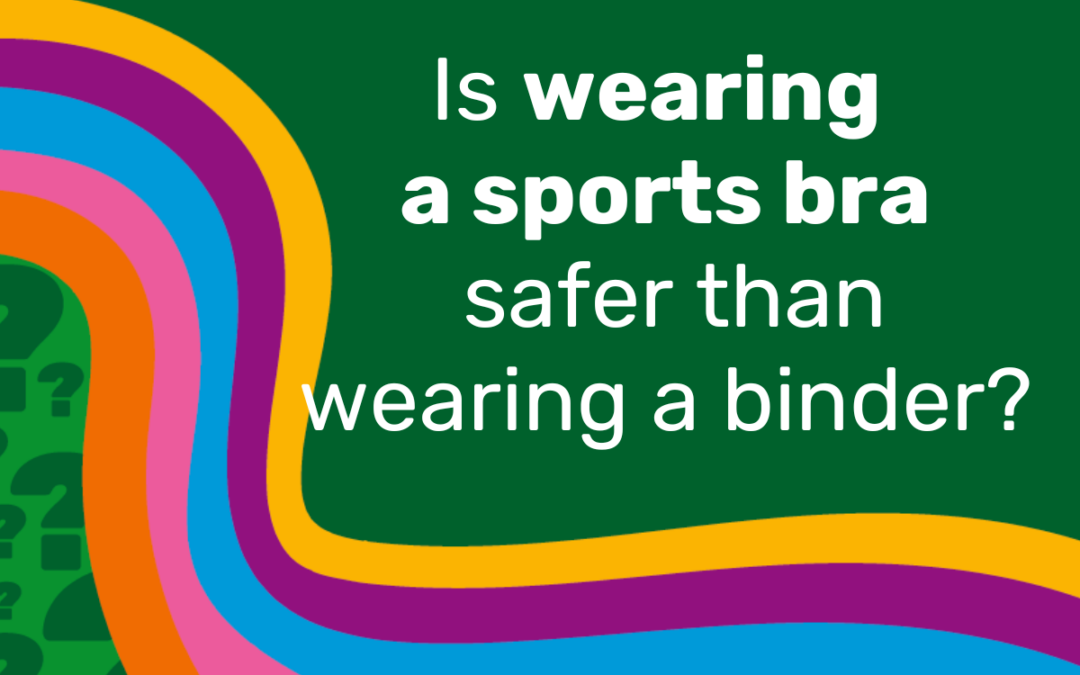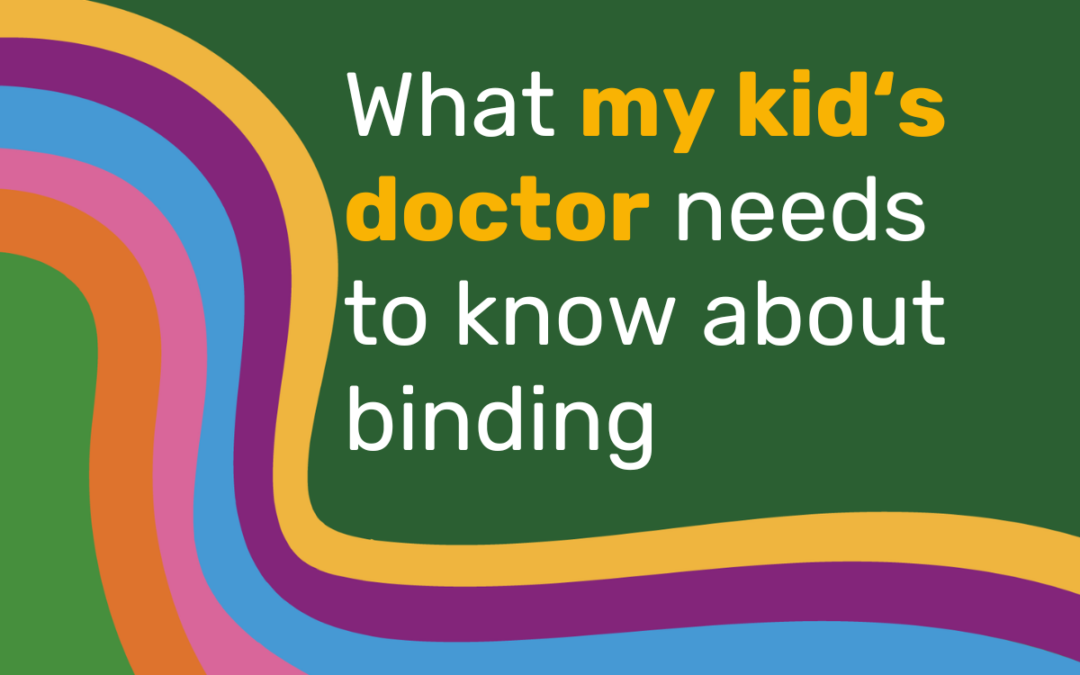
What my kid’s doctor needs to know about binding
What my kid’s doctor needs to know about binding:
If you’re here, chances are good that you are a parent doing the best you can to support your kid as you grapple with whether binding is right for your kid. You are doing a great job- this is hard stuff and I’m here to help as much as I can.
Parents rely on family doctors and pediatricians for sound advice when it comes to their kid’s health but most doctors are woefully unprepared to counsel parents or young people about the practice of binding.
You have to be a more active medical advocate for your kid because gender-affirming care is an issue medical professionals often lack training in. Many families have already been down this road so I asked parents what they wished their kid’s doctors had known about binding. Based on their feedback and my clinical experience, the following are guidance and resources to help you help your doctor help your kid.
-
What a Binder Is
One frustrated parent lamented “[I wish the doctor knew] anything at all. The sheer existence of binders! That [binding] isn’t about fashion or being a rebel.” Another parent who encountered a totally unreceptive doctor said, “For starters, [they need to know] that there are ARE safe ways to bind.”
Unfortunately, most medical providers have never seen an actual binder and many therefore make incorrect assumptions that leads to unhelpful advice, at best, and dangerous misinformation, at worst. Binding is a safe practice now with a breadth of different options and most doctors still have an image of an ACE bandage wrapped around the chest or a garment that is similar to a corset.
Doing your homework about what kinds of binders exist is easier with the BinderFinder tool where you can review 52 different features of binders to explore what might meet your kid’s unique needs.
Self-Advocacy Tip #1- Provide the visual
If your kid already has a binder, take it with you to your appointment. If not, collect images of the binders that you are considering and take them to the appointment.
This site provides information cards designed to quickly educate your provider on the most important facts to know about binding. and include illustrations of healthy and unhealthy binding methods.
-
Physical Health Impacts
A parent articulated what I think most parents are looking for when they turn to their child’s doctor: “I want the doctor to know all the guidelines to help bind safely, as well as the potential risks, this way [we could] make an informed decision.”
A doctor who has done their homework to understand this growing practice among young people is the gold standard. But if you don’t have access to a gender-affirming doctor, you are not likely to find that expertise. This family was lucky to have such a resource and helps us envision a better future: “We had a great PA attached to the gender clinic, who answered my questions and gave me a very informative packet to take home. I would want every doctor to be that prepared. I didn’t even bother asking our GP.”
This better future is my passion and, based on a decade of clinical experience treating the pain and discomfort from binding, I wrote a book that dives deep into the impact that the various forms of binding have. Chapters like ‘Binding and the Body’, ‘Health Risks of Binding’ and ‘An Active Life’ can your provider the depth of understanding to provide you and your kid good counsel.
Self-Advocacy Tip #2: Point Doctors to Resources
Reach out ahead of your appointment and tell the doctor that chest binding is one of the concerns that you would like to discuss and ask them to get a copy of Healthy Chest Binding for Trans and Nonbinary People: A Practical Guide so that they are prepared to have an informed discussion with you and your kid.
Doctors like research so the Resources for Providers page on this site has a complete list of existing peer-reviewed studies on binding. Sharing this link before your appointment may help your medical providers to feel more confident discussing the risks and benefits.
-
Mental Health Impacts
To tragic ends, doctors don’t always understand or give credence to the impact that dysphoria has on gender-expansive youth. Doctors need to be exposed to the research and the narratives that help them to better serve both your kid’s mental and physical health. The following is an excerpt from Healthy Chest Binding for Trans and Nonbinary People: A Practical Guide:
“Binding the chest is a life-saving and quality-of-life enhancing strategy that can safely allow assigned-female-at-birth TGNC people to fully express their identity…. Dysphoria can be triggered by physical, social, emotional, and cultural factors and… can manifest as anxiety, depression, rage, or fear and ranges from mild to severe. For many young people, dysphoric distress arrives in tandem with chest development in puberty. The presence of unwanted chest tissue is extremely isolating and often results in severe depression and crippling social anxiety. Tragically, TGNC people who die from suicide are often struggling with dysphoria in some form.”
Ideally, doctors will take a harm reduction approach with patients, discussing what the best solution is for your kid’s unique situation. They must first recognize that mental and physical risks are being balanced in the decisions about binding. One of the most common outcomes of discussions of binding health with doctors is the simple answer “stop binding”. End of story. Since 4 out of 5 people who bind believe that it is important to discuss chest binding with their healthcare provider, but only 15% do so because they feel unsafe discussing it, doctors must not be allowed to dismiss their patient’s mental health needs. (Jarrett, et al)
A disheartened parent reached out to me for help saying, “The Dr… just told him not to [bind] and he could have surgery when he was older.” Wisely the parent knew that prohibiting binding encourages secretive and high-risk binding and ultimately offered this piece of advice to other parents: “Keep talking to your kids even when the doctors won’t… Open communication is better than the alternative of DIY binding which is what definitely causes [the worst] damage.”
Self-Advocacy Tip #3- Stand Firm and Be Prepared
You are the expert on your kid. Changes in their emotional, social, and mental behaviors will be most apparent to you. Come to your appointment ready to find a solution that will give your kid relief from their distress.
Be ready with your answer if you feel that the doctor is being dismissive. Healthy Chest Binding for Trans and Nonbinary People: A Practical Guide has a chapter devoted to navigating healthcare appointments including a list of 9 responses to a doctor shutting down the conversation about binding. Check them out or formulate your own but, be prepared and stand your ground.
-
Have Empathy and Support Choice
A good bedside manner makes all the difference, right? Parents often talk to me about the frustration they felt that their doctors didn’t seem to care about the issue their kid was struggling with. One said to me, “Why don’t they get it? [binding] is uncomfortable, so nobody is going to wear one long term if they don’t need to.”
Each patient comes to their provider with a different set of needs to weigh. What you need from a doctor is to support you and your child in making the right choice. You make decisions every day on balancing risks for your kids— How much screen time is healthy? Can we afford organic foods? Does this sport have too high of a risk of injury- why that power be taken away from you about binding?
Self-Advocacy Tip #4: Know When to Leave
Change providers if you aren’t getting support. Telehealth is making access to gender-affirming providers easier through sites like QueerDoc even in states with increasingly hostile policies on trans healthcare. I offer 1:1 coaching sessions to get expert advice on binding health and can help with selecting the right binder, best practices, unique binding scenarios, and techniques to address pain.
You and your kid deserve compassionate care and knowledgeable support.
Give Advice To Other Parents
Are you a parent of a child who chest binds? You can help other parents by taking our survey about being a caregiver to a kid who binds. When you take the survey, you’ll help me to help parents be better able to support their own kids with less anxiety.
Join our newsletter
Healthy Binding Email List
Be the first to know when we schedule a new workshop or course, create a new healthy binding resource, or when we add new content to our site.
We'll never share your information, that's a promise.


